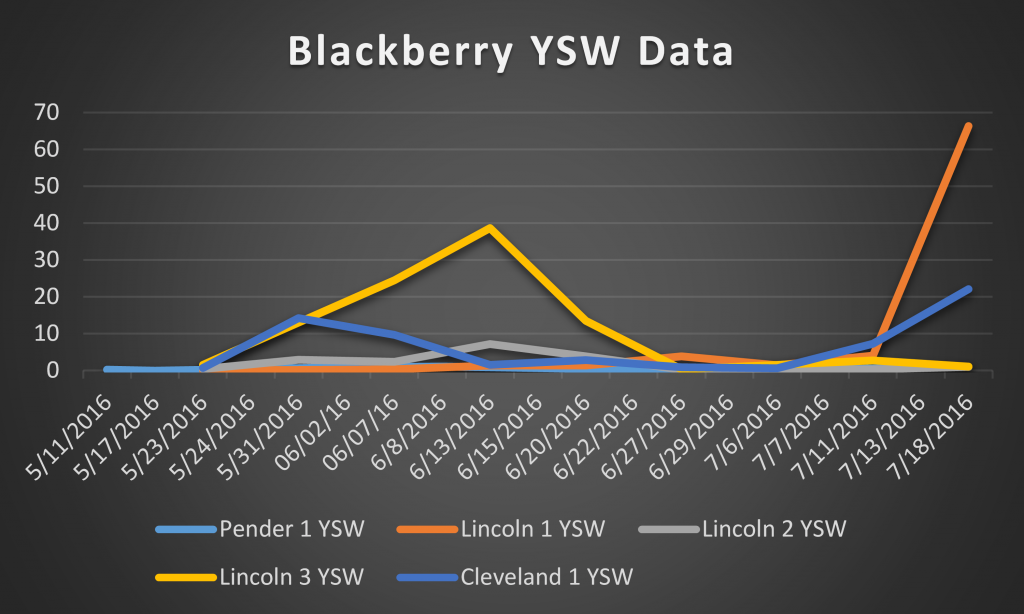Spotted Wing Drosophila Monitoring Report August 5, 2016
go.ncsu.edu/readext?420916
en Español / em Português
El inglés es el idioma de control de esta página. En la medida en que haya algún conflicto entre la traducción al inglés y la traducción, el inglés prevalece.
Al hacer clic en el enlace de traducción se activa un servicio de traducción gratuito para convertir la página al español. Al igual que con cualquier traducción por Internet, la conversión no es sensible al contexto y puede que no traduzca el texto en su significado original. NC State Extension no garantiza la exactitud del texto traducido. Por favor, tenga en cuenta que algunas aplicaciones y/o servicios pueden no funcionar como se espera cuando se traducen.
Português
Inglês é o idioma de controle desta página. Na medida que haja algum conflito entre o texto original em Inglês e a tradução, o Inglês prevalece.
Ao clicar no link de tradução, um serviço gratuito de tradução será ativado para converter a página para o Português. Como em qualquer tradução pela internet, a conversão não é sensivel ao contexto e pode não ocorrer a tradução para o significado orginal. O serviço de Extensão da Carolina do Norte (NC State Extension) não garante a exatidão do texto traduzido. Por favor, observe que algumas funções ou serviços podem não funcionar como esperado após a tradução.
English
English is the controlling language of this page. To the extent there is any conflict between the English text and the translation, English controls.
Clicking on the translation link activates a free translation service to convert the page to Spanish. As with any Internet translation, the conversion is not context-sensitive and may not translate the text to its original meaning. NC State Extension does not guarantee the accuracy of the translated text. Please note that some applications and/or services may not function as expected when translated.
Collapse ▲We removed our traps from harvested blueberry fields on July 13th, and we have now collected all the data and can look back over some of the trends that presented themselves over the season. Yeast/sugar water trap capture spiked at all of the sites at the end of trapping period. This spike was expected and likely due to a lack of attractive fruit. There were very few blueberries left in the field. Those remaining were overripe, and our traps became more attractive in comparison.
The Scentry trap capture data had similar end of season increases at two out of the three sites where we were still collecting data. The New Hanover 1 site was located at the Ideal Track of the Horticultural Crops Research Station near Castle Hayne, NC. This site is comprised of research blueberries fields, many of which were not harvested completely. Therefore this site may have had more available fruit compared to the other sites. In addition, the Scentry bait traps were also at the end of their four week rotational schedule during the final week of trapping.

This is one of the first pictures I took in the blueberry fields: a blueberry with a lacewing egg laid on it. Photo: Grant Palmer
The average number of total (male and female) SWD captured per site per day are presented in the figures below. Trapping began at six blueberry fields on May 11, 2016. Scentry lures were not available until May 17th, so these were deployed at blueberry locations during the second week of monitoring.
YSW refers to traps baited with “yeast/sugar water”, and Scentry refers to traps with Scentry lures.
We are monitoring a total of five blackberry fields, and first checked traps on May 17, 2016. SWD trap captures are generally higher in blackberry fields as compared to blueberry fields.
Data is continually processed and will be updated weekly as it becomes available.
With the scouting at our blueberry sites completed, (and all of the blueberry scouting data present) we would like to take a moment to thank our participating blueberry growers for working with us throughout the season. Your support, and the support from all of our growers, has been greatly appreciated.
More information






